The first time I experienced “launch control” was in a V10-powered BMW M5 back in 2006. We were about 30 journalists assembled at one end of an air force runway in Germany, each behind the wheel of shiny new M5. After nudging my way to the start line, a BMW tech arrived with instructions to sequentially press the Sport button, press the Power button, disable traction control, place left foot firmly on the brake, push the gearshift forward, floor the accelerator and hold it.
Then with engine screaming, let go of the brake and “O-M-freaking-G!” It was pure exhilaration. The term “press launch” was redefined.
No doubt about it, many people just love to go fast; it’s all about the g-forces. In performance cars it’s how fast can it corner? How quickly can it stop? How fast can it accelerate? And of those three, surely the most fundamental pleasure comes from simple thrill of raw acceleration.

Of course, carmakers know this and they market the bejeezus out of it. At this year’s Canadian International Auto Show in Toronto, for instance, Nissan introduced its 2016 GT-R Nismo, whose 600 horsepower engine propels it, said an enthusiastic Nissan spokesperson, from 0-100 km/h in 2.9 seconds (others say 2.7, so it was a conservative estimate). But 2.9 seconds to 100 km/h betters the original GT-R that took 3.3 seconds to achieve the same speed, and behind the wheel of which I got happily lightheaded due to the g-force that accompanies such a feat.
There’s no doubt that car enthusiasts, especially in North America, adore straight-line acceleration. But huge engineering resources are required to bring acceleration times down once you get into the really serious numbers. Of course, it’s worth it for the exotic car manufacturers like Porsche, Bugatti, Ferrari and McLaren; for years they’ve been in a full-blown Pace Race. Many such companies produce vehicles that reach 100 km/h in three seconds or less, but they all cost way more than the GT-R, which really is that car’s claim to fame.

For example, Porsche timed the 918 Spyder at 2.6 seconds from 0-100 km/h (Car and Driver magazine said they did it in 2.2). But that car cost over a million bucks.
Still, for a production car, the 918 Spyder’s factory-verified 2.6 seconds to 100 km/h is mighty quick, until you get to the superbikes. A Suzuki GSX-R1000, for example, required 2.35 seconds to make 100 km/h, presumably with the rider’s hands bolted to the handlebars. And then there’s the celebrated 2010 MTT Turbine Y2K Superbike that was reported to accelerate from standstill to 100 km/h in a scant (as we say) 1.5 seconds. Jay Leno has one, if that means anything to you.
One-point-five seconds. Just think about that. I did, as I was driving back to Ottawa after the auto show. We were passing Trenton on an infamously boring stretch of Highway 401 in a nifty new Volkswagen Golf R (0-100 km/h in 4.9 seconds, in case you’re wondering), and even though it’s a sweet car, one’s mind wanders.
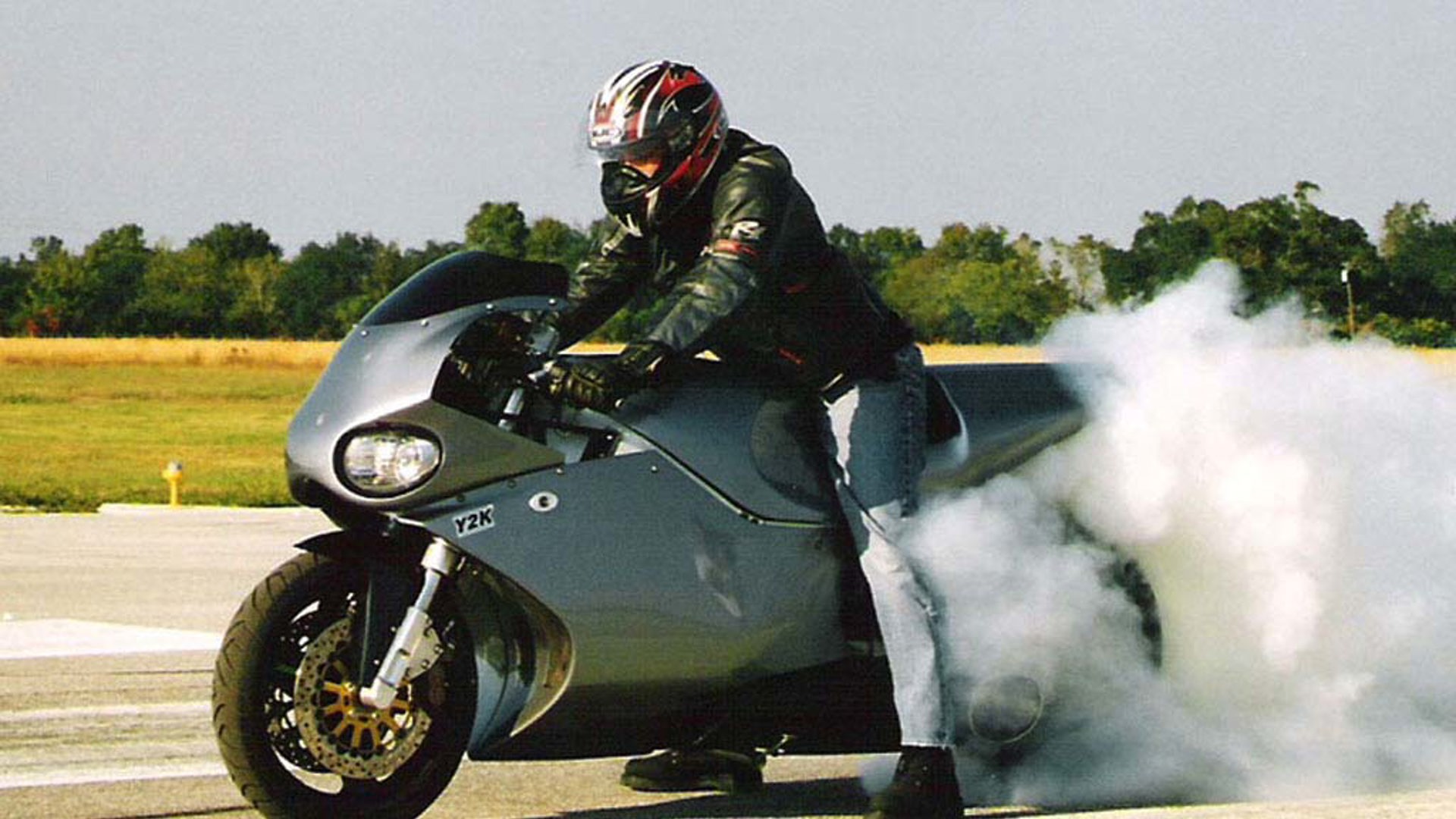
Where mine wandered was to thoughts about the limits of acceleration. Like, if 1.5 seconds is possible on a superbike, maybe one second is also possible. And if one second is possible, what about a half second? Is that possible? Okay, what about 0.2 seconds? I mean, really… just how low can we go?
Well, I’ll tell you. To find out, you move into Top Fuel Dragster territory where such vehicles piloted by people like Tony “The Sarge” Schumacher travel from 0-160 km/h in 0.8 seconds, 0-119 km/h in 0.5 seconds and 0-100 km/h in an estimated 0.4 seconds in their 8,000-plus horsepower projectiles.
Now that, sir (and ma’am), is motoring. You don’t get very far, but you get there almost instantly.
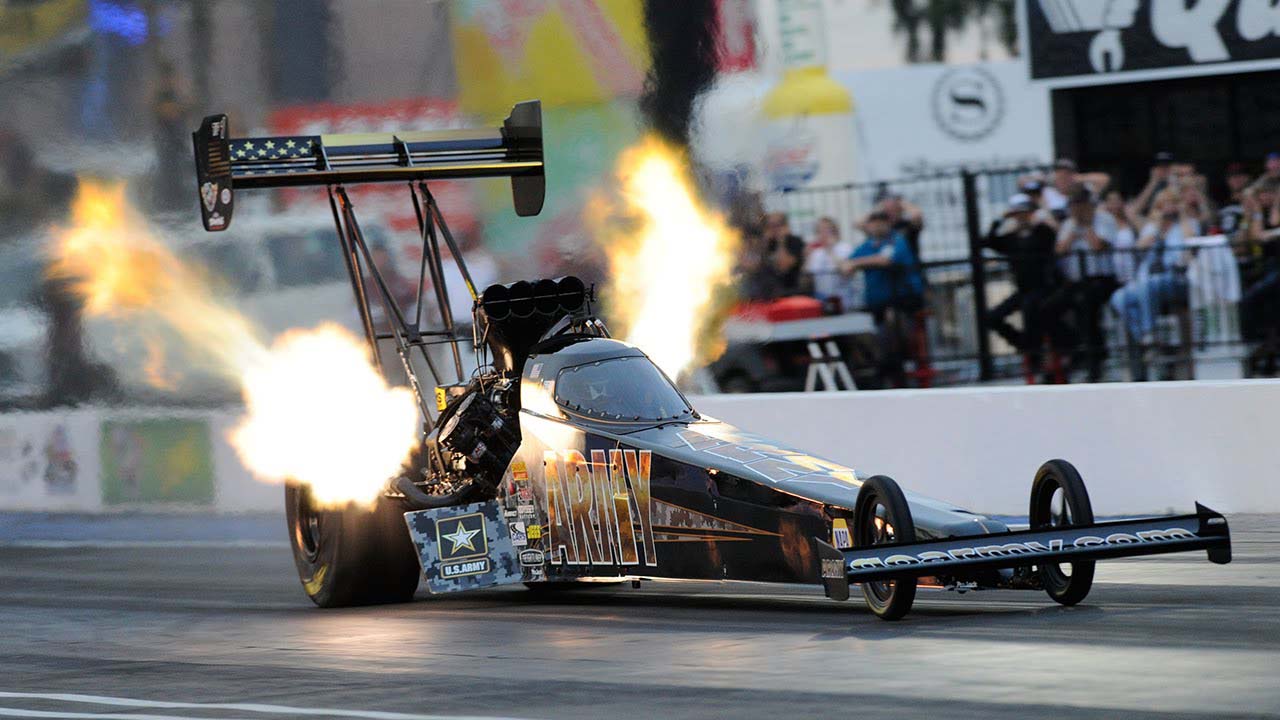
After Trenton comes Belleville, by which time not only the car but also my mind was fully on cruise control (fortunately the Golf R has intelligent cruise control, so at least one of us was paying attention).
Thus liberated, the imagination is unleashed and anything becomes possible. So if you’ll permit me, what, for example, if you could get to 100 km/h in 0.1 of a second? What about 0.05? You see where I’m going? We’re getting close to zero, so at what point do you, you know, go to the other side? What if your GT-R Nismo could go sub-zero? It’s a whole other dimension to conquer. Eat that, Porsche! And if Nissan got involved, it probably would cost less, too.
If you could go sub-zero, I reasoned (okay, “reasoned” may be too generous a word), but if you could go sub-zero, then you’d get where you’re going before you left, which would be hugely useful if you were late (note to self: possible business opportunity).
I’m thinking, and the physicists among you can correct me if I’m wrong, but I’m thinking that if you get somewhere before you leave, than you’ve effectively built a time machine because you’re getting there earlier than when you left. So you’re in the past.

Oh, baby. Now we’re talking. This is going to absolutely eliminate traffic congestion.
Of course, now that I actually think about it, that’s what Back to the Future was all about! The Delorean; the massive acceleration; the plutonium. Only it didn’t blast Michael J. Fox a mere fraction of a second into the past; it blasted him 30 years into the past. From 1985 to 1955, if you recall. Yes, that was one serious Delorean! (Too bad the real ones could barely accelerate at all…).
But (and not meaning to be pedantic) as far as the movie is concerned, it wasn’t really “Back to the Future,” it was actually “Back to the Past.” The problem in the movie -- I was now closing in on Napanee and had completely gone transcendental -- was getting from 1955 to 1985 which really would be “Back to the Future,” and here Hollywood resorted to the cheap device of a lightning bolt, because as far as I can see, time machines of the type we are currently postulating, only work in one direction.
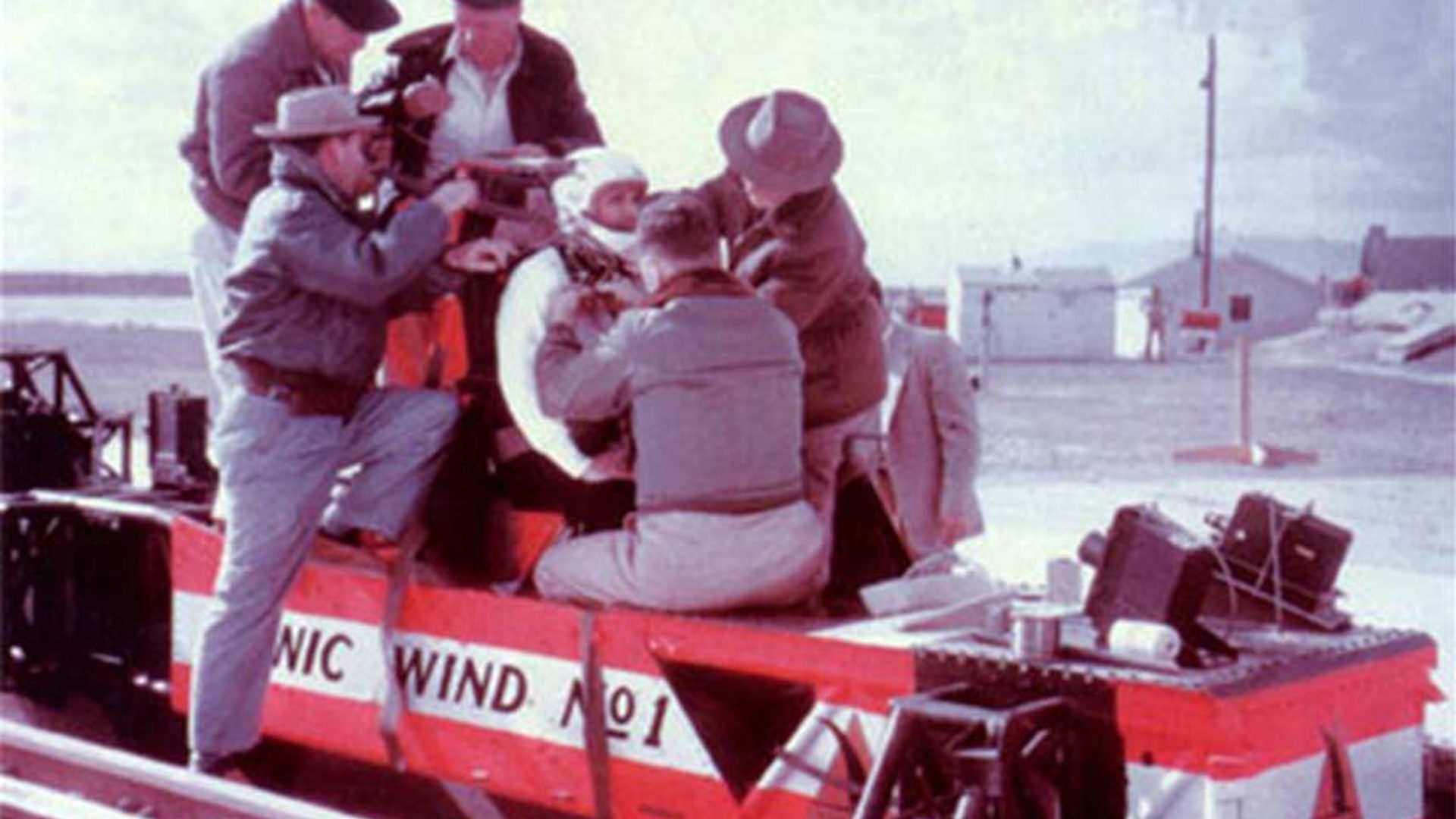
I know what you’re thinking. What about the g-forces, dummy? The problem likewise presented itself to me at Kingston, specifically when the intelligent cruise didn’t notice we were entering a construction zone. Obviously the acceleration times we’re talking about would place some wear and tear on the body and even if you did have enough horsepower to generate sub-zero acceleration times, you might flatten an eyeball or two. Or maybe even disappear.
Turns out this is exactly what the United States military was thinking in the same 1950s that Michael J. Fox cinematically visited. The military (it’s always the military in the US…) was concerned about the effects of acceleration and deceleration (apparently the same thing, although the latter can happen much more abruptly) on the human body. They were thinking relevance to high altitude flight, supersonic flight and ultimately, space flight.
In other words, would people be able to “take it”?
Enter Colonel John Paul Stapp, MD, PhD, the guy I watched on TV as a child, hurtling down a railway track somewhere in America, sitting atop a rocket-powered sled. I didn’t know his name at the time, and never actually saw a picture of him stationary. He was too busy demystifying g-forces, his face assuming alarming shapes as he hung on for dear life.
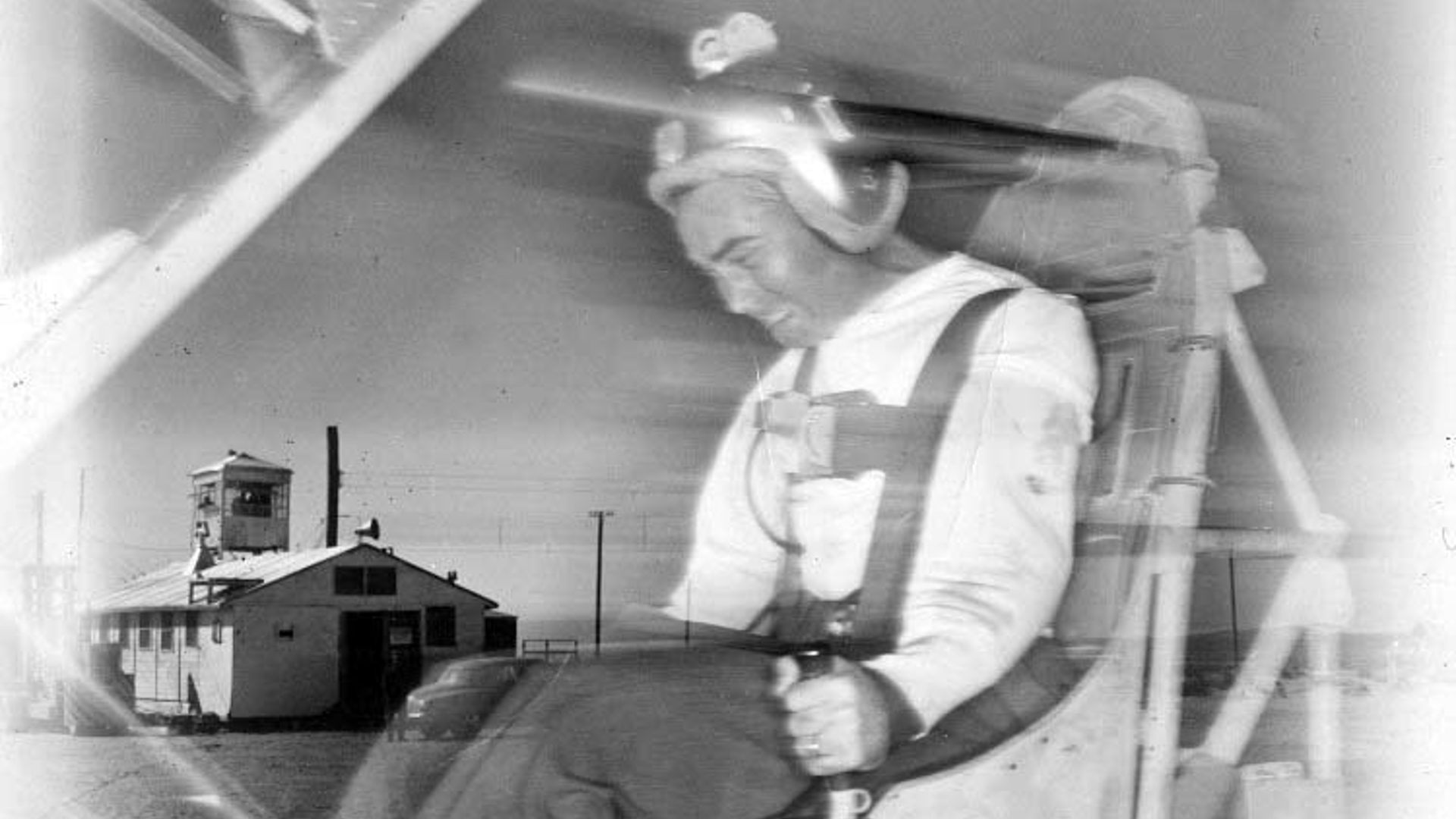
Basically, Colonel Stapp devised outrageous acceleration and deceleration experiments and then subjected himself to them, truly “going where no man had gone before,” to anticipate Gene Roddenberry. His rocket sled, for example, exposed him to massive positive and negative g-forces with the idea that he and his kind would subsequently study the effects on his mind and body (assuming he survived). In 1954, his sled actually went supersonic, breaking the land speed record at 1,017 km/h and in so doing he demonstrated that humans are not only crazy, but when his sled stopped in one second flat, that they can withstand at least 46.2G.
By the way, there was no cockpit on this sled; I don’t think Stapp even wore goggles. And speaking of cockpits, if you’ll permit a minor digression, apparently the US Air Force was interested in knowing what would happen to a pilot if a plane’s canopy suddenly detached at high speed and altitude. No problem. John Stapp flew in one at 920 km/h, and then released the canopy. As it turned out, his head remained attached to his body, he lived, and the question was answered.
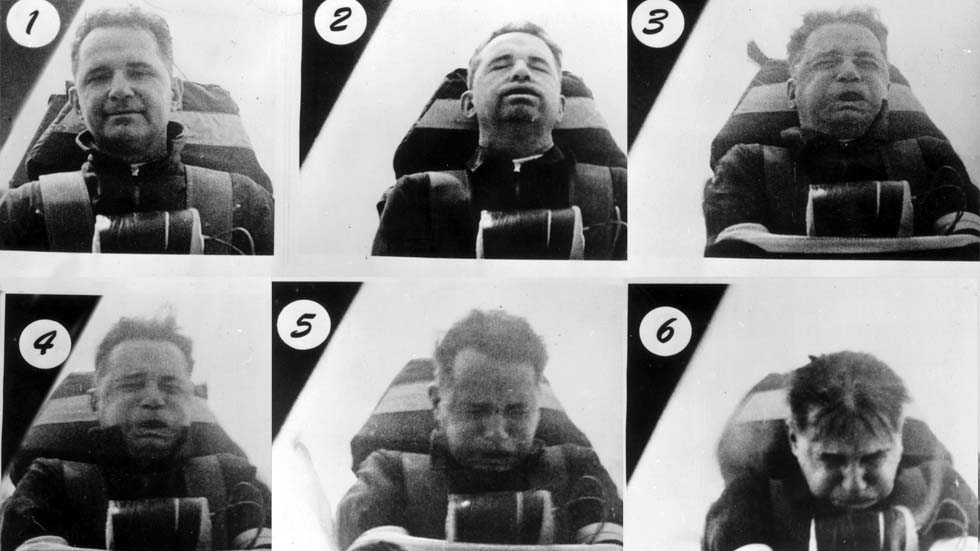
One more thing: Because Colenel Stapp studied the effects of abrupt deceleration on the human body, he determined that without a doubt, you are better protected in a crash if your seat faces backwards. He therefore recommended to the major commercial airlines that they construct aircraft with the passenger seats so oriented. It was a simple design modification that was politely ignored.
Now, where were we? Right, just approaching Brockville and still nothing to distract en route to the nation’s capital.
So yes, what Colonel Stapp demonstrated, among many important things, was that humans could survive a g-force of 46+ and he believed we could manage much more than that. This latter observation is important, hence the italics in case you’re nodding off.
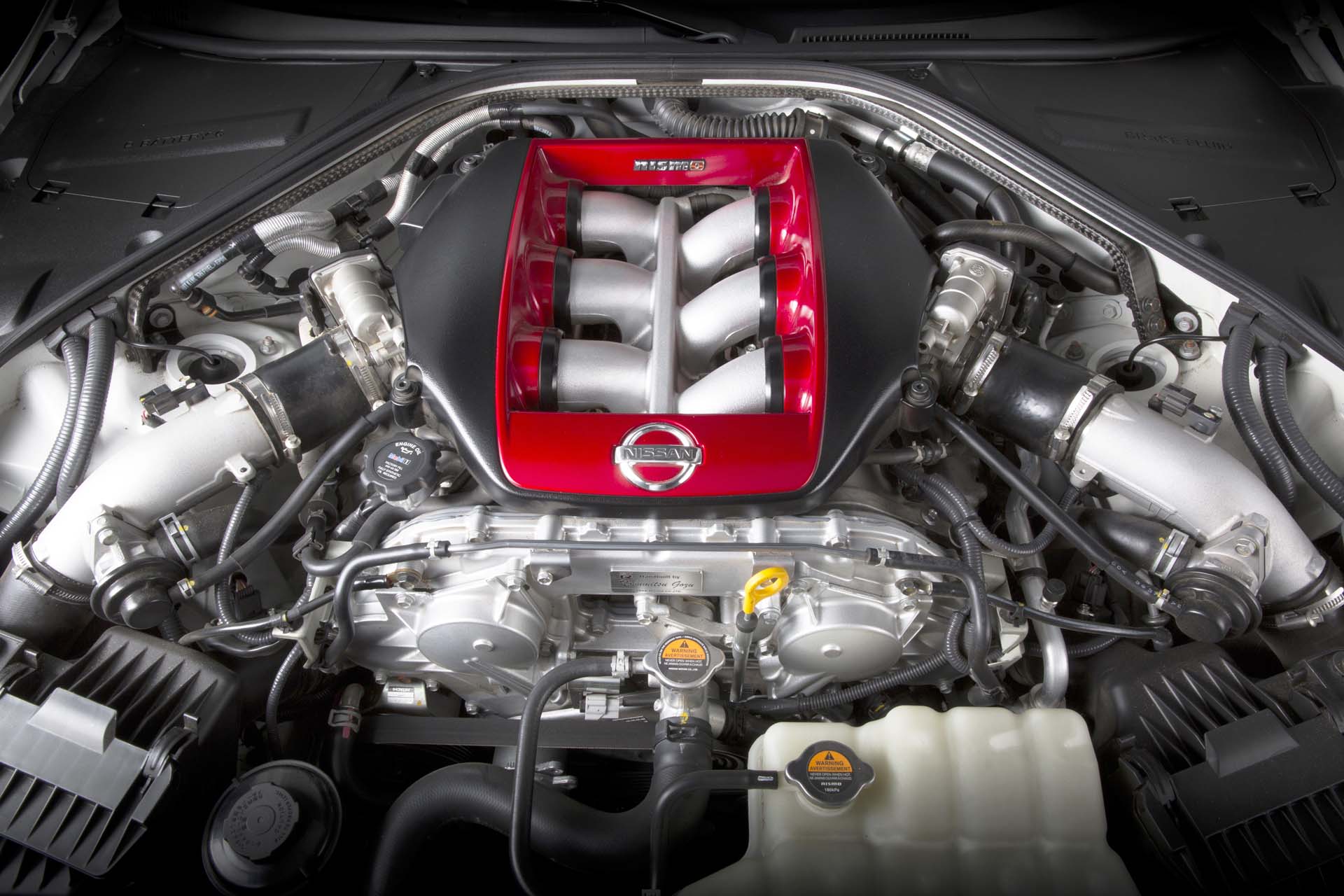
The reason it’s important is because we are indeed going to be subjected to quite a significant level of g-forces as we go sub-zero (I’m bullish on this concept). Fortunately I found a useful calculator online that determines g-forces based on time and speed. What you do is enter your starting speed (in this case, 0), then your end speed (62 mph, equivalent to 100 km/h), and then the time elapsed. Brilliant. Just what we need.
So you can easily calculate that the aforementioned GT-R Nismo’s 2.9 seconds to 100 km/h subjects you to a mere 0.97 g’s, and your rate of acceleration will be 34.4 km/h per second. Quick, I grant you Nissan, but manageable. Stapp would yawn.
As far as g-forces go, we’re actually still okay at 0-100 km/h in 0.1 second, which would generate about 28 g’s. Colonel Stapp would also be good with this, and, I think, somewhat more impressed. Because here’s the rub: to reach 100 km/h in 0.1 second you would need to pretty much instantly accelerate to about 1,000 km per second, which even Stapp would have to agree is brisk.
Things get exponential if you try it at 0.01 second. Now you have to endure about 280 g’s and you’ll require acceleration of 10,000 km per second from standstill. I’m thinking you will definitely need a Kevlar vest and really good tires.
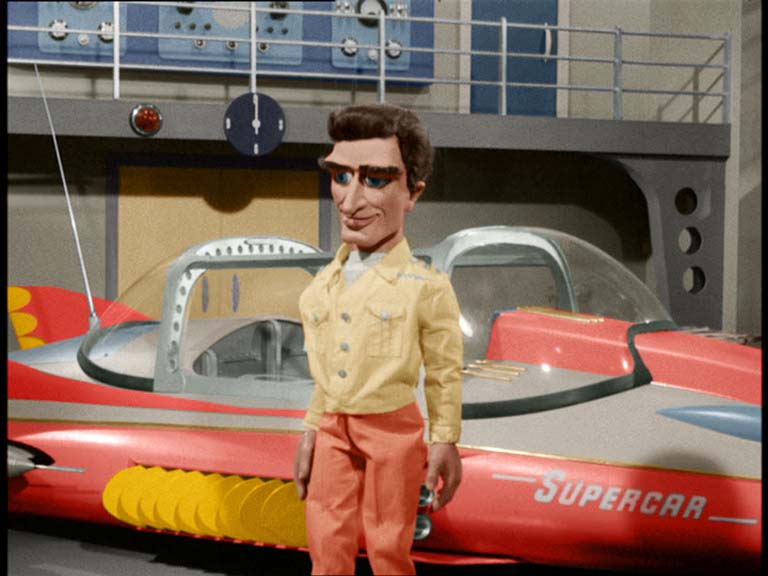
But clearly we are now out of the realm of everyday high performance vehicles. I reckon even Mike Mercury’s Supercar would be overmatched (and how was that even a car, Mike?).
No, for this kind of acceleration we have to get particular. And by that I mean we’ll need a Particle Accelerator of the Large Hadron type. That’s exactly what the boffins in Switzerland are doing at the European Organization for Nuclear Research (CERN). At heart they’re just a bunch of car nuts trying to shave a few hundredths off their lap times, although puzzlingly, they are also trying to crash their particles into each other. This seems odd to me, as I’m sure it would to “The Sarge.” After all, if you treat your hardware like a demolition derby, then where’s the ROI in that?
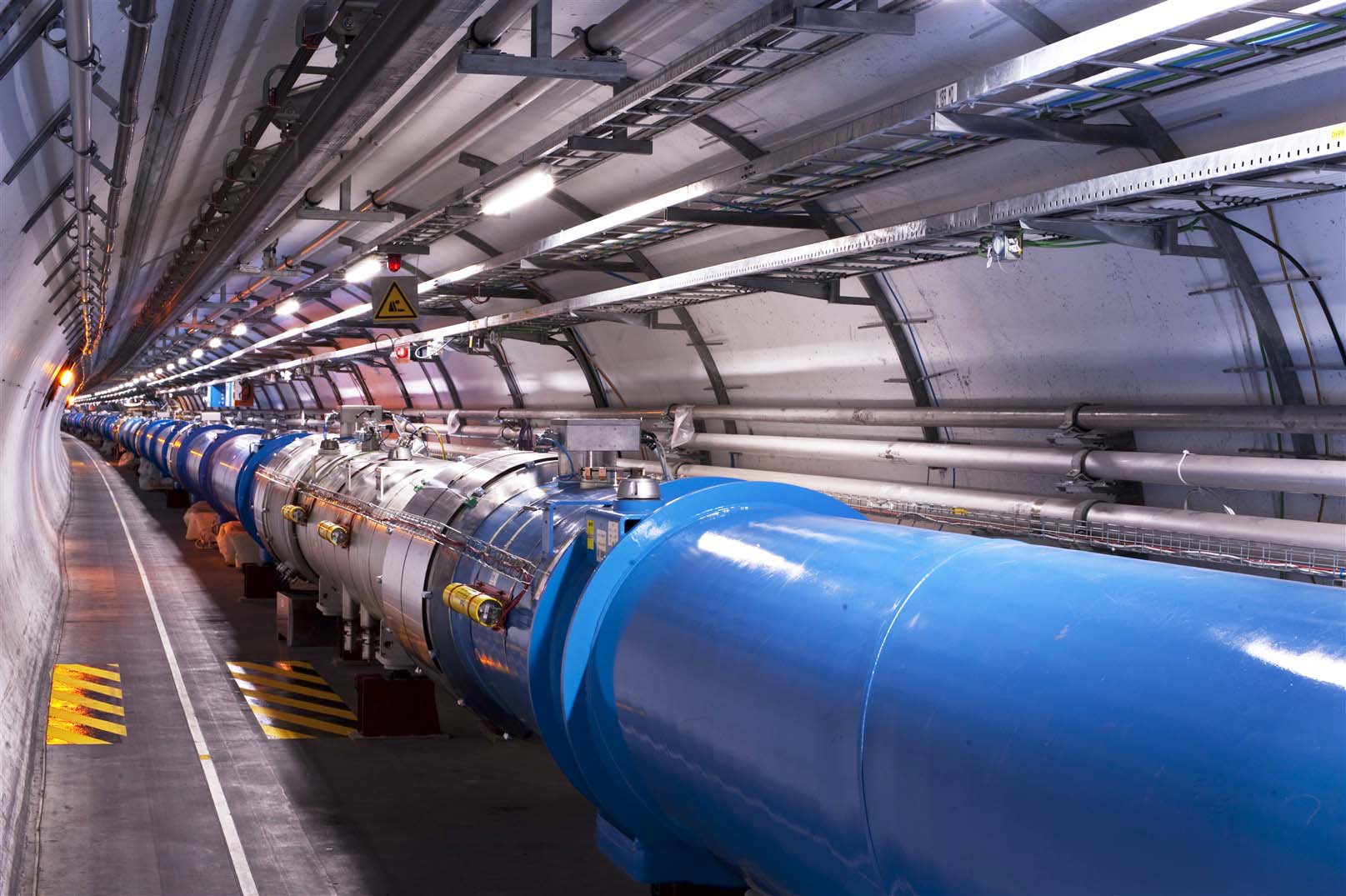
What I’m thinking, and I’ve just passed Kemptville -- one of Canada’s tidiest towns, not to be confused with the wilder Unkemptville down the road – what I’m thinking is that car manufacturers (italics trigger warning) are so close to lowering acceleration times to match those produced by the white coats at the Large Hadron that they can almost taste it. Really, a mere 2.2 seconds, if you believe the august Car and Driver, separates the Porsche 918 Spyder from the time-space continuum.
Well, I’m impressed. Especially when you consider that the first classic car I owned, a 1960 Morris Minor, required 30 very long seconds to reach 80 km/h. Try as the plucky Morrris would, I don’t think it could even go 100 km/h, presumably making the time it takes to get there, well… forever.
Maybe that’s how you get into the future. Stay tuned while I think that through.



















